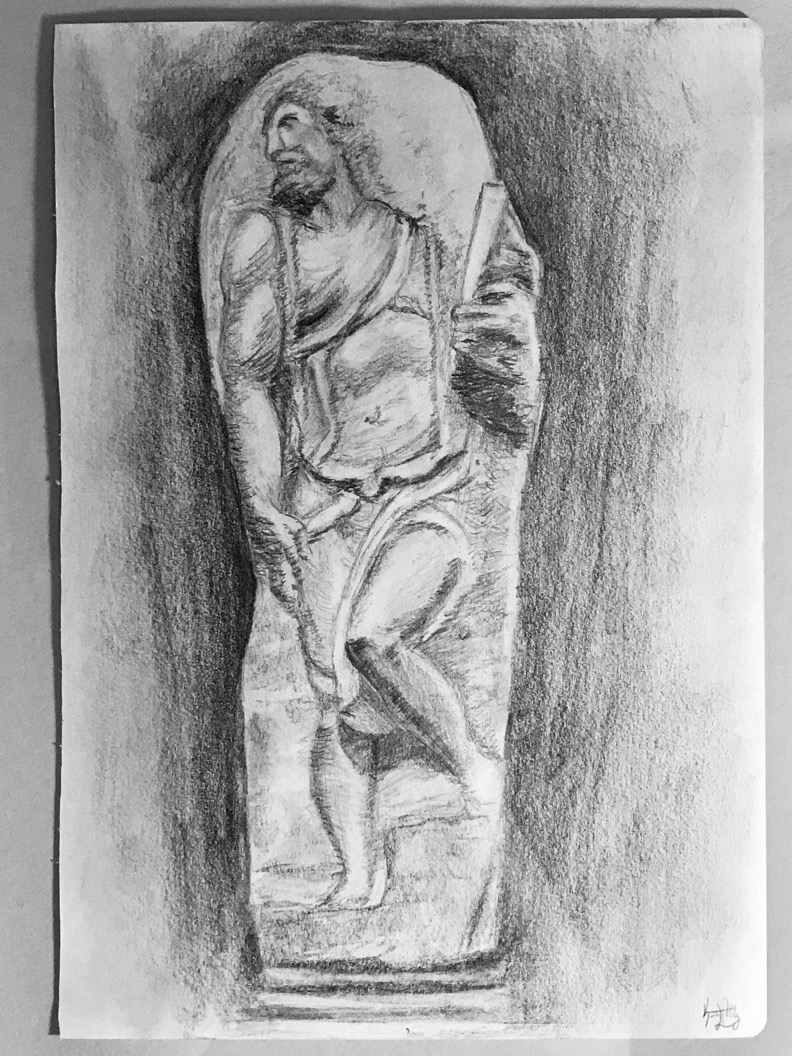Matthew’s Transformation | Mark 2:13-17
Tuesday | September 15, 2020 |
Mark 2Matthew’s Transformation | Mark 2:13-17
By Krista Vaughn
“He went out again beside the sea, and all the crowd was coming to him, and he was teaching them. And as he passed by, he saw Levi the son of Alphaeus sitting at the tax booth, and he said to him, “Follow me.” And he rose and followed him. And as he reclined at table in his house, many tax collectors and sinners were reclining with Jesus and his disciples, for there were many who followed him. And the scribes of the Pharisees, when they saw that he was eating with sinners and tax collectors, said to his disciples, “Why does he eat with tax collectors and sinners?” And when Jesus heard it, he said to them, “Those who are well have no need of a physician, but those who are sick. I came not to call the righteous, but sinners.””
Mark 2:13-17 ESV
Once upon a time in the city of Capernaum, there lived a tax collector named Levi. Now during the trying times of the first century of the common era, tax collectors were greatly disliked by people from all backgrounds, except the Roman Empire of course. Being a tax collector was a wealthy trade. It was the task of the tax collectors to make the monetary goal of the districts from the people living in it. The tax collectors even kept the surplus money. Now, having a career with dirty money was greatly frowned upon and gave them the titles of “sinners” by the Pharisees, and if they happened to work for Rome, traitors.
What about our fellow, Matthew? Well, in the book of Mark and Luke, his name is Levi. Levi stems from the tribe of Levi who consisted of priests, especially from the Levites…so a descendant of holy attribution took up a career known for deceit and thieving. AND being marked as a sinner from the Pharisees, people were not supposed to intertwine their lives with them unless they were to be labeled as “unclean.”
A broken man not wanted by anyone…
Was there any hope? Yes, yes there was.
Levi began to hear rumors about this Galilean who preached around the city. He attended a few of the meetings, and probably started to feel a tug at his heart. How do I come to this conclusion? Because Jesus calls him to “follow” Him.
…Which brings me to an Art Historical reference!
This sculpture depicted was created by Michelangelo, and is commonly known as one of his “unfinished” pieces. However, Michelangelo claimed it was meant to be that way in order to describe the transformation Levi went through: from being a sinner to being a disciple.
It encapsulates a frozen piece of time. A transition. A transfiguration. A testimony.

Now how can a non-believer, such as Michelangelo, create a beautiful representation as this? Well, that is another story, but I do believe God can bring goodness from many situations, including from a sinner ;)
Which brings me to the second part of the passage, although we will have to side-step into the book of Luke 5:27-32.
“And Levi made him a great feast in his house, and there was a large company of tax collectors and others reclining at table with them. And the Pharisees and their scribes grumbled at his disciples, saying, “Why do you eat and drink with tax collectors and sinners?” And Jesus answered them, “Those who are well have no need of a physician, but those who are sick. I have not come to call the righteous but sinners to repentance.”
This transformation led Levi to hold a celebration for Jesus and invite his friends. What a great way to fellowship! There, Jesus was comfortable in the presence of Levi with his friends. He welcomed them and saw them as people. He gave them the opportunity to have their lives changed for the better! No longer outcasts.
Ultimately, there are many things to take from this passage, but the main CATCH is about sowing. Jesus planted seeds during His preaching. From there, He was able to help those seeds of knowledge sprout into a lifelong journey of discipleship, for that is a part of the Great Commission: make disciples.
What we do, what we say, who we portray can all influence the people around us. It only took Jesus to recognize a man as a person who could be loved, to change a life.
And they lived in joy ever after.AuthorKrista Vaughn




